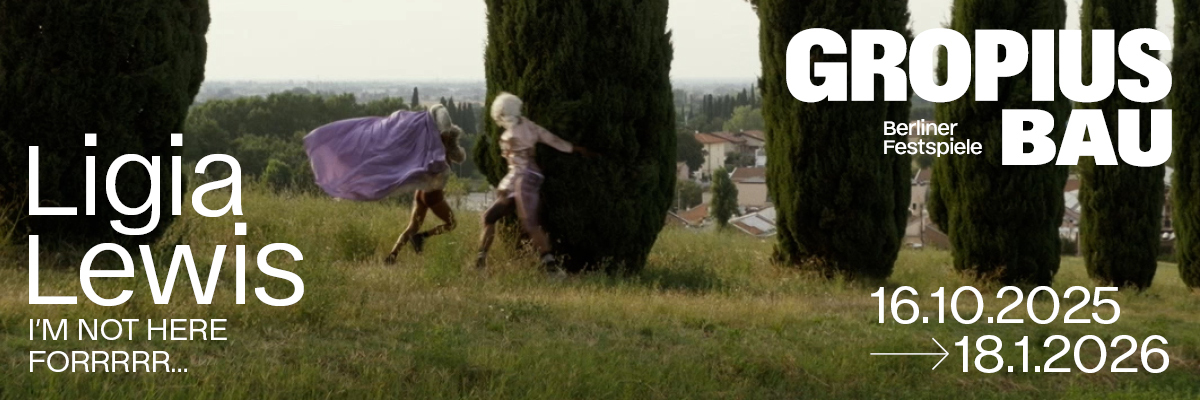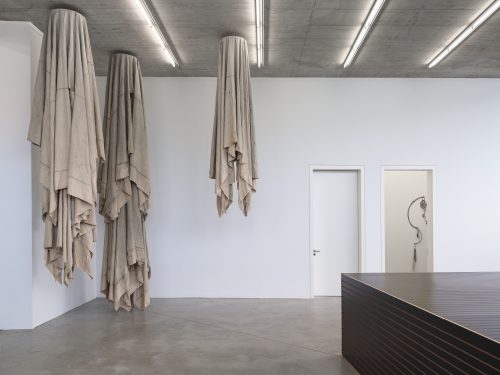
Bekhbaatar Enkhtur
Imagining for Real

Bekhbaatar Enkhtur, Imagining for Real, 2023, exhibition view, Matèria, Roma. Courtesy Matèria, Roma. Foto Roberto Apa
Advertisement

Bekhbaatar Enkhtur, Imagining for Real, 2023, exhibition view, Matèria, Roma. Courtesy Matèria, Roma. Foto Roberto Apa

Bekhbaatar Enkhtur, Imagining for Real, 2023, exhibition view, Matèria, Roma. Courtesy Matèria, Roma. Foto Roberto Apa

Bekhbaatar Enkhtur, Imagining for Real, 2023, exhibition view, Matèria, Roma. Courtesy Matèria, Roma. Foto Roberto Apa

Bekhbaatar Enkhtur, Imagining for Real, 2023, exhibition view, Matèria, Roma. Courtesy Matèria, Roma. Foto Roberto Apa

Bekhbaatar Enkhtur, Imagining for Real, 2023, exhibition view, Matèria, Roma. Courtesy Matèria, Roma. Foto Roberto Apa

Bekhbaatar Enkhtur, Imagining for Real, 2023, exhibition view, Matèria, Roma. Courtesy Matèria, Roma. Foto Roberto Apa

Bekhbaatar Enkhtur, Imagining for Real, 2023, exhibition view, Matèria, Roma. Courtesy Matèria, Roma. Foto Roberto Apa

Bekhbaatar Enkhtur, Imagining for Real, 2023, exhibition view, Matèria, Roma. Courtesy Matèria, Roma. Foto Roberto Apa

Bekhbaatar Enkhtur, Imagining for Real, 2023, exhibition view, Matèria, Roma. Courtesy Matèria, Roma. Foto Roberto Apa

Bekhbaatar Enkhtur, Imagining for Real, 2023, exhibition view, Matèria, Roma. Courtesy Matèria, Roma. Foto Roberto Apa

Bekhbaatar Enkhtur, Imagining for Real, 2023, exhibition view, Matèria, Roma. Courtesy Matèria, Roma. Foto Roberto Apa

Bekhbaatar Enkhtur, Imagining for Real, 2023, exhibition view, Matèria, Roma. Courtesy Matèria, Roma. Foto Roberto Apa

Bekhbaatar Enkhtur, Imagining for Real, 2023, exhibition view, Matèria, Roma. Courtesy Matèria, Roma. Foto Roberto Apa

Bekhbaatar Enkhtur, Imagining for Real, 2023, exhibition view, Matèria, Roma. Courtesy Matèria, Roma. Foto Roberto Apa

Bekhbaatar Enkhtur, Imagining for Real, 2023, exhibition view, Matèria, Roma. Courtesy Matèria, Roma. Foto Roberto Apa

Bekhbaatar Enkhtur, Imagining for Real, 2023, exhibition view, Matèria, Roma. Courtesy Matèria, Roma. Foto Roberto Apa

Bekhbaatar Enkhtur, Imagining for Real, 2023, exhibition view, Matèria, Roma. Courtesy Matèria, Roma. Foto Roberto Apa

Bekhbaatar Enkhtur, Imagining for Real, 2023, exhibition view, Matèria, Roma. Courtesy Matèria, Roma. Foto Roberto Apa

Bekhbaatar Enkhtur, Imagining for Real, 2023, exhibition view, Matèria, Roma. Courtesy Matèria, Roma. Foto Roberto Apa
Imagining for Real by Bekhbaatar Enkhtur is a snapshot of an evolving and unfolding artistic journey through which I hope to highlight some salient features and above all, a clear way of operating. However, I must begin with a premise on a matter that is only apparently out of focus, that of iconoclasm. When talking about iconoclasm and iconoclastic acts - that in recent years have often been dismissed in a summary and derogatory manner as vandalism - certain images immediately come to mind, perhaps only by chance, some are more vivid and immediate than others. The first is a photograph of considerable symbolic value taken in Budapest in 1956. The head of a huge statue of Stalin, torn down during the anti-Soviet uprising of the same year, laying in the street surrounded by a crowd visibly amused by the repeated defacement suffered by the monument. The face occupies the entire lower half of the image: in addition to the irons and chains presumably used to tear the statue from its base, we notice the inscription "W.C." on the cheek, an eloquent dedication to the Soviet dictator. We find the same kind of image, albeit certainly more explicit, on the occasion of the end of Saddam Hussein's regime in 2003: a statue torn down by a jubilant crowd, and a young man in the foreground urinating on the fallen dictator's face. It is fascinating, although perhaps not so surprising, that the same image appears in an engraving from 1565 by Philippe Galle, based on a work by Maarten Van Heemskerck. Depicting the destruction of a pagan temple, the work shows a chubby cupid in the bottom right corner of its composition, urinating into the open mouth of the severed head of a statue.
The history of iconoclasm is a story of entanglements between religion and politics, of recurrences and correspondences in the ways of conceiving the presence of images, especially when it comes to sculptures. Attacking a statue presupposes - not always, but often - projecting upon it a form of life and acting both concretely and symbolically to disempower it, if not annihilate it. In this sense, the fall of a statue represents a direct attack on the cultural and political value it embodies, whilst also entailing a clear reconfiguration of its aesthetic value. Rather ironically, it could be said that the outcome of an iconoclastic gesture is a paradoxical celebration of horizontality, of a violent approach between sculptural object and public, in which nothing monumental can withstand the comparison with the possibility of seeing things up close.
Nevertheless, this is not an exhibition on iconoclasm, but rather it evokes its theme and, above all, embraces this curious paradox, and Bekhbaatar Enkhtur’s practice as a whole. It’s evident that the sculpture, Untitled, which longitudinally cuts through a portion of the gallery - imposing and simultaneously frail - forces a close-up encounter and presents itself in terms of pure horizontality. This surely isn’t a fallen monument, nor is our hovering above it a result of violent impulses; rather, it’s the singularity of the figure that stimulates the gaze, guiding it towards the details, the porous surface, its imperfections and facial features. Nonetheless, the work originates from a precise reference, the Janraisig of Ulaanbaatar: a golden colossus created in 1913 to celebrate Mongolia’s independence, later destroyed during World War II by Soviet troops and rebuilt approximately twenty years ago.
Although the work originates from the artist's reflection on the cultural history of his native country, it does not simply express a personal formalisation of a significant political and religious event in Mongolia's past. As often common in Enkhur's universe of iconographic and symbolic references, the event is a pretext to sculpt. This is far from trivial, considering the artist's practice functions as a step-by-step trajectory in which narrative impulses are functional to a progressive, concrete, and material testing of the medium itself. Untitled alludes to the historical event from which it draws inspiration without explicitly evoking it; from a monumental statue torn down to a sleeping body, the sculpture lives and rests in the exhibition space, or temple for the occasion. If in the previously cited images, horizontality was synonymous with a reversal of perspectives and the end of the symbolic power of a monument, Untitled emphasises the active presence of the work in the space where it was imagined and where it saw the light. However, this presence is temporary. This sculpture is also destined for destruction; whether due to natural decay or human intervention, Untitled will not survive the exhibition.
The proclivity towards impermanence and the ephemeral is perhaps the central characteristic of Enkhtur's practice, allowing for the paradox of a growing production and a proportional decrease in the lasting traces of the work . A tension undoubtedly iconoclastic, not devoid of a certain tradition in the history of contemporary art, that reveals the artist's total fidelity to the materials with which he identifies. The term "use" would be indeed reductive: to fully grasp Enkhtur's practice, one must see him at work whilst manipulating raw wax or clay, perfectly aware of the organic and inorganic vitality of the matter he is corresponding with, probing its limits. As a result, the sculptures born from this process are not immune to the passage of time, weather conditions, or the nature of the space that houses them. Wax deteriorates, clay dries out, and the work always evolves into something different from its initial self. Likewise, even if slightly, this exhibition is also destined to mutate.
So what do we mean by "imagine for real"? Certainly, in the work carried out by the artist, we are far from a form of imagination linked to the ambiguous and suggestive idea of creativity. It is better to replace the latter with that of creation, as suggested by Tim Ingold: a deeply coherent, intentionally unplanned, situated mode of imagining. Imagining, therefore, means, for Enkhtur, being able to operate in a perpetual flow of stimuli derived from materials and context that intersect and juxtapose with the initial idea; a tendency to remove any form of project-based approach exemplified by this exhibition, whose conception has been finalised as I write these words; just a few days before the opening. Moreover, the imaginative strength of the artist's practice not only resides in the sleeping deity in wax, but is especially visible in the interventions that surround it.
Created as counterpoints to the sculpture, they are nothing but a charting - a verification - of the space in the conditions in which Enkhtur found it when entering for the first time. A gash, a trace of a demolished wall, becomes a half-arch of yellowish wax, almost alluding to a portal of entry to the hypothetical temple where the statue rests. On the walls, using the position of the yet to be removed nails as a reference, we find pencil drawings made with an extremely delicate and spontaneous stroke. Almost invisible from afar, they show pairs of figures facing each other. With stumpy and somewhat awkward bodies, they clap their hands to the rhythm of a nursery rhyme before freezing, "becoming statues," says the artist, recalling a common game from his childhood in Mongolia. "For young children, perception and imagination are the same thing, not because their world is one of fantasy rather than reality, but because they are immersed in the process by which things become what they are." These living sculptures are a metaphor for Enkhtur's practice, of a hypothetical and radical disappearance of the sculpture, materially impermanent, yet eternal in practice, in bodies, in things.
Enrico Camprini




